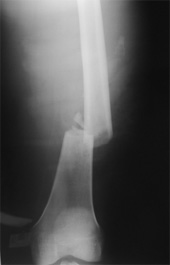November 15th, 2012 by admin in Health Tips
No Comments »
 Can we “train” our brains to be brighter, sharper, faster?
Can we “train” our brains to be brighter, sharper, faster?
A while back I wrote a post about a big study looking at “brain training”. The researchers wanted to know whether training programs that look like video games (like Brain Age andLumosity) could significantly improve brain performance on various tests. The results, in a nutshell, showed that while participants improved on the tasks they trained on (e.g., if the game involved ranking balls from smallest to biggest, the participants got *really* good at ranking balls from smallest to biggest), the improvement didn’t carry over to general brain function.Turns out ranking ball sizes doesn’t help you remember where you left your keys this morning.
Two years later, what’s the word?
I’m going to shift a little from how I normally do things (review a single article) and tell you about findings I learned about at the recent Aging and Society conference. At the conference, several researchers talked about brain training in the context of aging. We know that as we get older our cognitive abilities decline – we forget names and words, misplace our shopping lists, and process information a little bit more slowly. Wouldn’t it be fantastic if we could just spend ten minutes a day playing games on our iPad and successfully counter this decline? Of course it would be fantastic. Not just for us, but also for the companies who are trying very hard to convince us to buy their products to improve our cognition.
The problem is that skills are specific. If you want to become a fabulous jazz pianist, you have to play the piano (preferably jazz songs, too). If you want to become a star ballet dancer, you have to practice ballet. If you want to become a better mountain biker, you have to mountain bike – road biking will improve your leg strength and fitness, but ultimately it won’t make you a better mountain biker. So why should things be any different for brain skills?
As it turns out, they aren’t. Two years later, nearly all the research conducted in the field of brain training is turning up the same results: people only get better at the tasks they trained on – the improvement doesn’t cross over to more general skills, different skills, or everyday life. In one study, a researcher compared a commercially available brain training program with what she called an “active control” – a group that simply played regular video games like Tetris. She found that the group who spent time on the commercially available brain training program actually saw some aspects of their cognition decline compared with the control group. Bummer.
Now don’t throw out your Brain Age game yet – everyone at the conference agreed that engaging your brain in training programs is better than not doing anything. And most of the researchers felt that while the programs don’t work now, it’s not to say they’ll never work. We are increasingly more knowledgeable about how the brain works, what happens when we get old, and what different training tasks do. So it’s quite possible that sometime in the near-ish future (don’t ask me when) we could see the advent of brain training programs that do have a significant and lasting impact on cognition.
Until then, there is one thing you can do to have a significant and lasting impact on your brain health… And I’ll tell you in the next post.
***
Dr. Julie Robillard is a neuroscientist, neuroethicist and science writer. You can find her blog at scientificchick.com.
December 11th, 2011 by Jessie Gruman, Ph.D. in Health Policy, Health Tips, Opinion
2 Comments »


Did you know that every nursing home resident in the U.S. must be asked every quarter whether she wants to go home, regardless of her health or mental status? And if she says yes, there is a local agency that must spring into action to make that happen.
This is the result of a 2010 Center for Medicaid/Medicare Services regulation aimed at helping keep older people in their (less expensive) homes rather than institutional settings. A New York Times article notes that the nursing home exodus, while modest to date, is building. This means the number of people with serious chronic conditions like congestive heart failure, diabetes and chronic obstructive pulmonary disease who draw heavily on community-based primary care services will grow.
These returnees are joining their peers and the blossoming crowd of us Baby Boomers who intend to resist living in nursing homes with as much spirit as our parents did, while the consequences of our plump and sedentary lifestyles arrange themselves into a constellation of diabetes, congestive heart failure and COPD similar to the one that plagues our elders.
Much has been written about Read more »
*This blog post was originally published at Prepared Patient Forum: What It Takes Blog*
July 26th, 2011 by Medgadget in News, Research
No Comments »

Care Innovations, a joint venture between GE and Intel, has released Connect, a service designed to address social isolation in seniors.

Connect software runs on a touch screen device and features social networking, as well as health management and reporting tools. The system has been undergoing a successful user trial at a nursing home in Michigan since last year.
More about Connect from the announcement: Read more »
*This blog post was originally published at Medgadget*
June 30th, 2011 by Paul Auerbach, M.D. in Health Tips
No Comments »

 My 86 year-old mother, who is generally in good health, slipped and fell recently and suffered a fractured femur. She was unfortunate to have suffered the accident, but had the good fortune to be discovered quickly, treated promptly and well by the paramedics who responded to her, and then to have a swift and skillful operation by an orthopedic surgeon to repair the fracture. Almost miraculously, she was standing upright (with a considerable amount of pain) the next day and had begun the rehabilitation process.
My 86 year-old mother, who is generally in good health, slipped and fell recently and suffered a fractured femur. She was unfortunate to have suffered the accident, but had the good fortune to be discovered quickly, treated promptly and well by the paramedics who responded to her, and then to have a swift and skillful operation by an orthopedic surgeon to repair the fracture. Almost miraculously, she was standing upright (with a considerable amount of pain) the next day and had begun the rehabilitation process.
At her age—indeed at any age—a fractured femur is a very significant injury. This past year, I have learned of friends and others who have suffered falls and broken their legs, ankles, or backs, as well as others who suffered “pathological fractures.” The latter group had the bones break from normal daily stresses, without a traumatic incident, because the bones were weak and/or osteoporotic. More than a few of these injuries occurred outdoors, associated with stumbles on the trail or falls.
All of this highlights features of an excellent review article that was published this past year in the New England Journal of Medicine. Authored by Murray Favus, MD, it is entitled “Biphosphonates for Osteoporosis” (New England Journal of Medicine 2010;363:2027-35). Anyone who is contemplating taking or administering this therapy would benefit from reading this article. Read more »
This post, Osteoporosis Treatment With Bisphosphonates: Is Exercise Good Or Dangerous?, was originally published on
Healthine.com by Paul Auerbach, M.D..
June 11th, 2011 by StevenWilkinsMPH in Opinion
3 Comments »

When you or I visit an accountant, a lawyer or car mechanic, we know what our role is and have a pretty clear understanding of what the ” expert” is supposed to do. But when it comes to a trip to the doctor these days the roles and responsibilities of patients and physicians have become blurred and unpredictable…and the patient seems to generally be on the losing end.
Take my Mom’s case. My Mom who was 89 years old and evidently had severe osteoarthritis. She never knew that even though she was been seen every couple of months by her Internist for years and years. It’s too bad…because my Mom died last week from complications due to a compression fracture of her spine. Turns out her spine was very fragile according to her consulting Neurosurgeon but no one ever told her.
The first question that entered my mind when I heard of her condition was why didn’t her primary care physician “pick up” on the severity of her condition before she fell and fractured her spine? Read more »
*This blog post was originally published at Mind The Gap*
 Can we “train” our brains to be brighter, sharper, faster?
Can we “train” our brains to be brighter, sharper, faster?






 My 86 year-old mother, who is generally in good health, slipped and fell recently and suffered a fractured femur. She was unfortunate to have suffered the accident, but had the good fortune to be discovered quickly, treated promptly and well by the paramedics who responded to her, and then to have a swift and skillful operation by an orthopedic surgeon to repair the fracture. Almost miraculously, she was standing upright (with a considerable amount of pain) the next day and had begun the rehabilitation process.
My 86 year-old mother, who is generally in good health, slipped and fell recently and suffered a fractured femur. She was unfortunate to have suffered the accident, but had the good fortune to be discovered quickly, treated promptly and well by the paramedics who responded to her, and then to have a swift and skillful operation by an orthopedic surgeon to repair the fracture. Almost miraculously, she was standing upright (with a considerable amount of pain) the next day and had begun the rehabilitation process.








